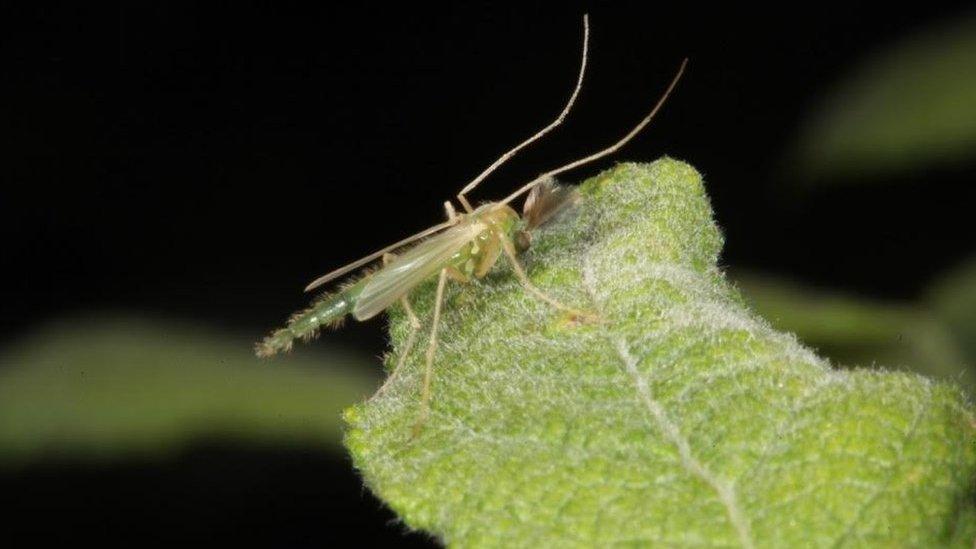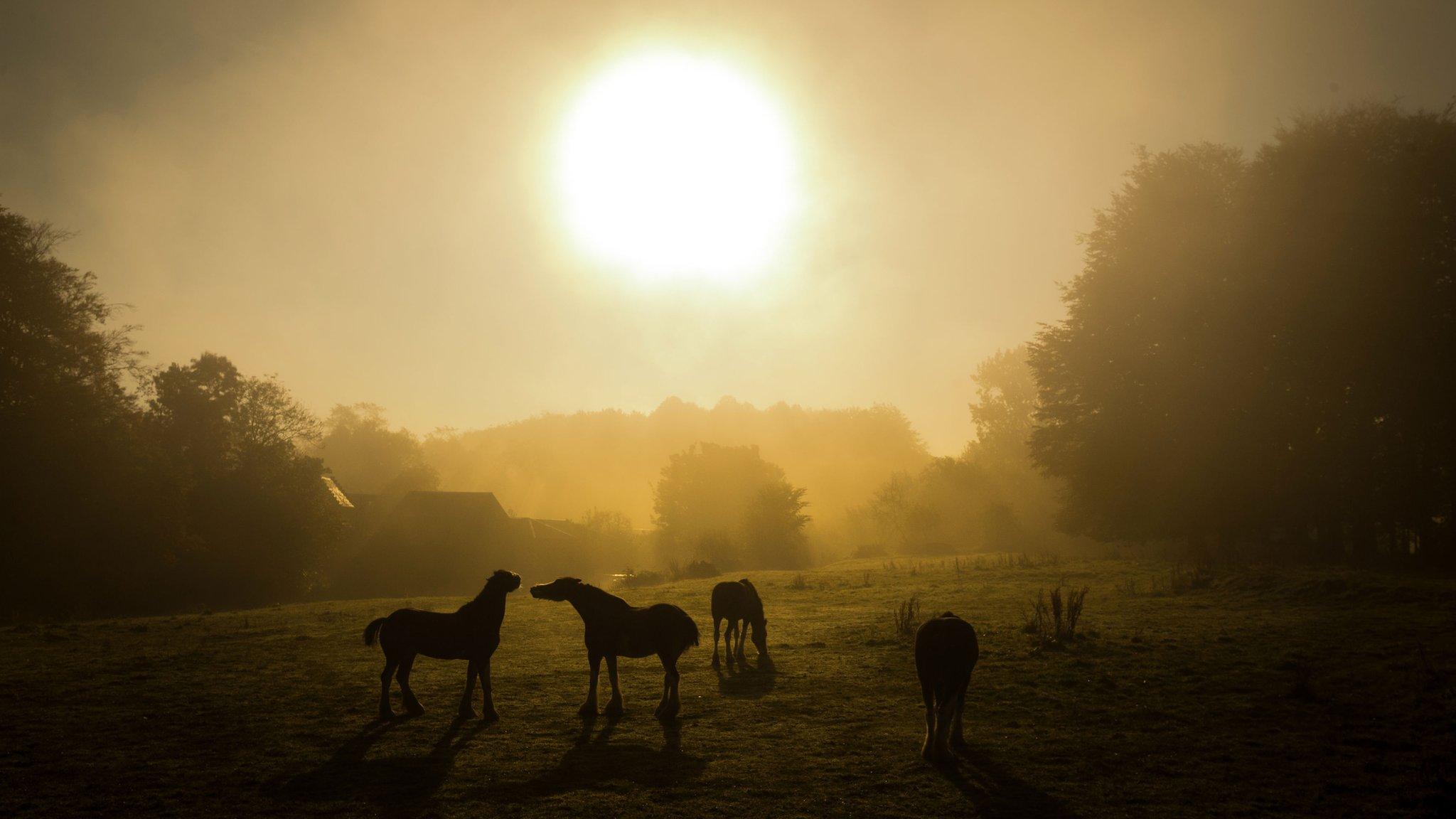Scotland's dry weather devastates midge numbers
- Published

Scotland's infamous biting midges are struggling to survive in this year's dry summer, say experts.
The tiny flying insects, also known as midgies, usually appear in two hatchings and thrive in wet and warm conditions.
Scientists behind the Scottish Midge Forecast said it was likely the recent weather in some parts of Scotland had supressed the second peak in numbers.
But they warned a change in conditions could see them emerge with "a bang".
Scotland has more than 35 species of biting midges, but one dubbed the Highland midge is the most ferocious, according to the forecast team.
A spokesman said: "We have had numerous reports of midges being out in high numbers in the north and west but this recent hot, dry weather isn't ideal for adult midge survival.
"Midges prefer it wet and warm so it's likely that the hot but dry conditions will suppress the emergence of adults, but as soon as we get some wetter weather, they'll probably come out with a bang.
"We had the first peak of midges in early to mid-June and normally we'd have the second peak five or six weeks later, but this second peak is probably being delayed by the current conditions.
"I suspect this peak is another three to four weeks weeks away. A bit later than usual."
While parts of Scotland have enjoyed dry conditions, areas such as the west Highlands have experienced days of rain, wind and lower temperatures.
The Scottish Midge Forecast is run by Dundee-based APS Biocontrol Ltd, which also makes an insect repellent.
Its experts have previously calculated there could be an estimated 21 billion biting midges in the Highlands and Islands, the region they are most commonly encountered.
That figure was for female of species, which feed on blood which they require to mature their eggs.
The males feed on nectar and other natural sugars.
In 2015, autumn's warm weather produced a rare third hatching of biting midges.
- Published15 June 2018

- Published1 March 2017

- Published6 November 2015
